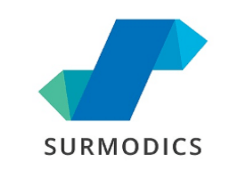 Surmodics recently announced that six-month data from the AVESS first-in-human (FIH) study of the company’s Avess arteriovenous fistula (AVF) drug-coated balloon (DCB) was shared at this year’s Vascular Interventional Advances virtual conference (VIVA 2020; 6–8 November, virtual).
Surmodics recently announced that six-month data from the AVESS first-in-human (FIH) study of the company’s Avess arteriovenous fistula (AVF) drug-coated balloon (DCB) was shared at this year’s Vascular Interventional Advances virtual conference (VIVA 2020; 6–8 November, virtual).
The AVESS study is a prospective, multicentre, single-arm study to assess the safety and performance of the Avess DCB when used in the treatment of subjects with obstructive lesions of AVFs for haemodialysis.
Six-month data from the study show that target lesion patency at 30 days and six months was 100% and 90.9%, respectively. A single reintervention was required within six months, with no AVFs thrombosed. The study’s primary safety endpoints reported no mortality and no device or procedure related adverse events at 30 days, and all patients maintained functional AVFs for haemodialysis.
“This first-in-human study demonstrates that the Avess DCB is a safe and promising treatment for AVF stenosis, which can lead to vascular access dysfunction, thrombosis and loss,” said Ramon L Varcoe, associate professor of vascular surgery at Prince of Wales Hospital (Sydney, Australia) and co-lead investigator for the AVESS FIH clinical study.
“Previous AVF studies have demonstrated that DCBs effectively reduce rates of restenosis after percutaneous angioplasty,” added Andrew Holden, associate professor, director of Interventional Radiology at Auckland City Hospital (Auckland, New Zealand) and co-lead investigator for the AVESS FIH clinical trial. “The Avess DCB is a next-generation DCB that may provide further clinical benefits while minimising systemic paclitaxel exposure.”
Data presented include six-month results from 12 patients treated with an Avess DCB between December 2018 and August 2019. The majority of AVFs were radiocephalic (10/12, 83.3%) with the stenosis located in the juxta-anastomosis (7/12, 58.3%), cannulation zone (2/12, 16.7%), and outflow (3/12, 25%). All patients completed follow-up at or beyond six months.
“Our goal with all of our DCB platforms has been to advance the technology to improve drug transfer and distribution effect on the arterial wall offering the opportunity to use a lower drug dose,” said Gary Maharaj, president and CEO of Surmodics. “We are quite pleased with the AVESS first-in-human study results, which provide vital safety data on the Avess DCB and directional data on its effectiveness. This FIH data strengthens our believe that the Avess DCB could be a safe and promising treatment that improves patient outcomes while reducing the number of interventions needed to maintain patency.”








